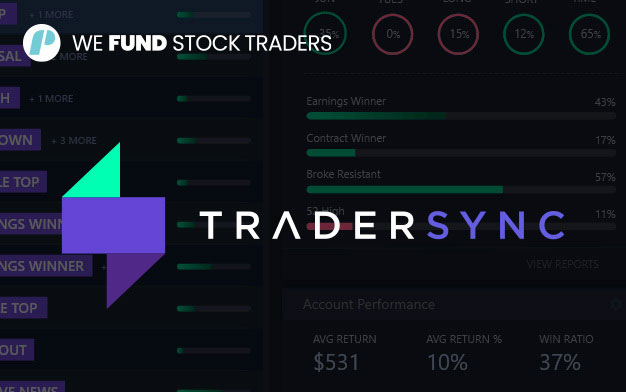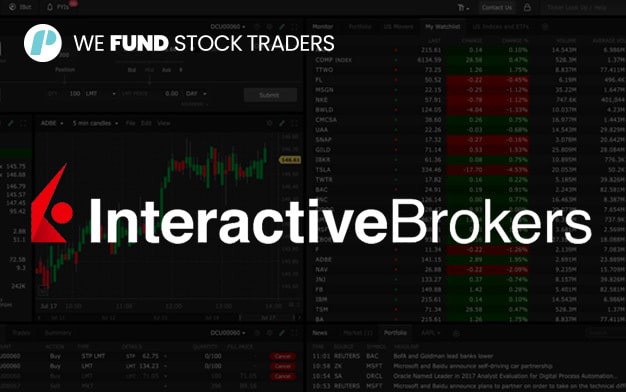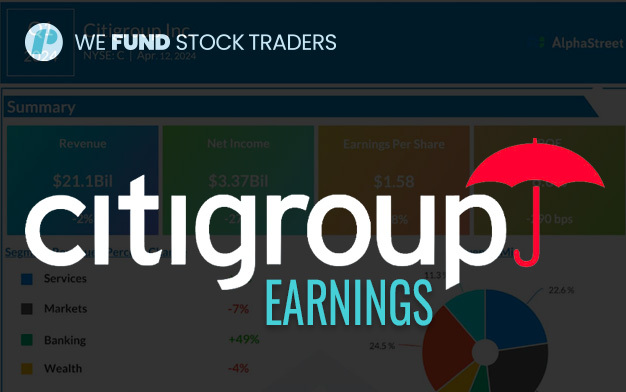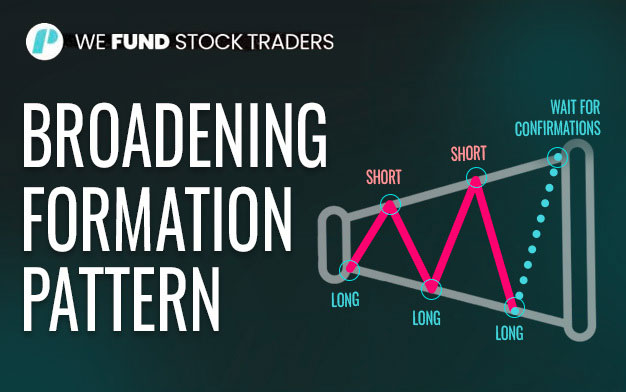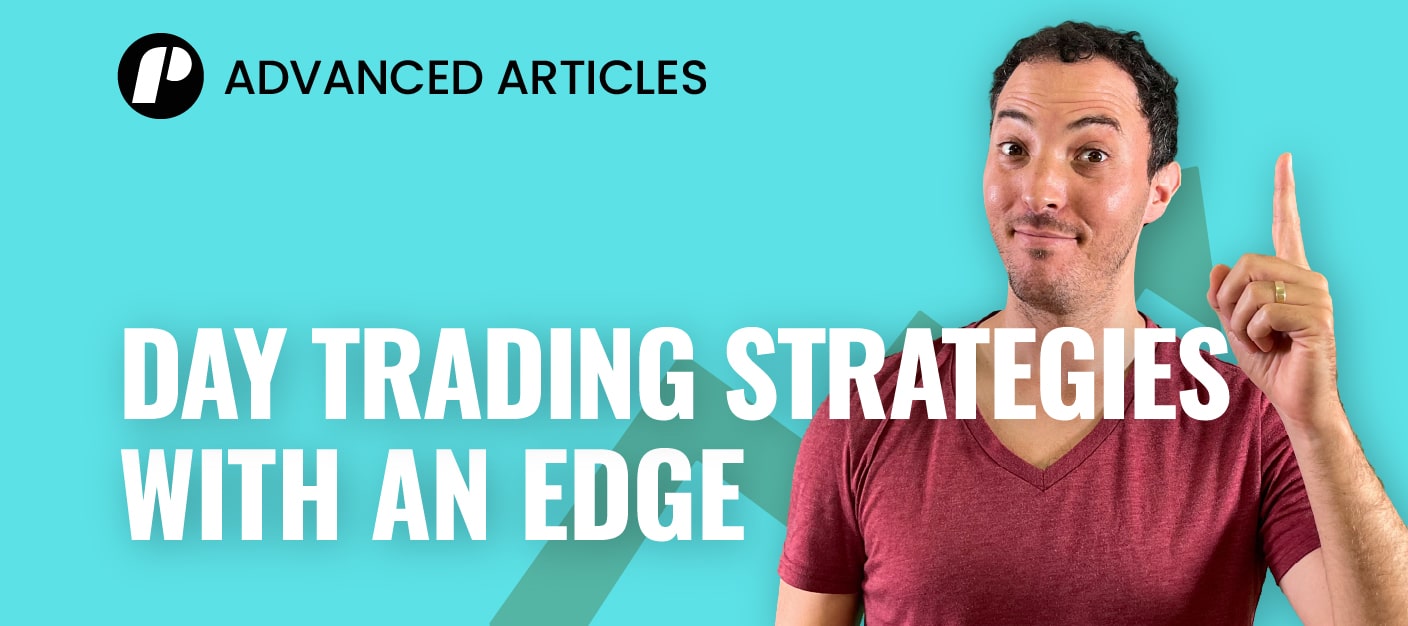
Day Trading Strategies
Day trading is fast-paced! Hence, the trader must possess lightning speed reflex and discipline to pull the trigger once the opportunity reveals itself. Undoubtedly, day trading can be very lucrative and exciting if you get the foundation right. In order to have a good foundation, every day trader must have at least one of the day-trading strategies to take advantage of the slight price movement. It is dangerous for a day trader, especially beginners, to trade without a strategy.
One thing about trading is that the market is volatile. Hence, you must pay attention to the tiniest detail to capitalize on it. So, if you must survive in the trading industry, which is intensely competitive, you need to have a strategy to predict the price movement of the market. Remember, you could use several trading strategies to get an edge over other traders.
To make life easier, we have come up with this to explain the nitty-gritty details of having a trading strategy as a day trader and why you need to have one in place. You’d also learn the main types of trading strategies and how to use them. Let’s dive into the details.
What are a day trading strategies, and why do you need to have at least one?
A trading strategy is a plan designed to help a trader achieve a profitable return in a long or short-term market. Trading strategies are based on predefined criteria and rules used when making trading decisions. For any trading strategy to be successful, it must be quantifiable, verifiable, objective, and consistent.
The trading strategy you decide to use could be simple or complex, and it should involve considerations such as your value, technical indicator, or portfolio diversification. A critical thing to note about trading strategy is that it is based on objective data and analysis. Hence, it is in the trader’s best interest to adhere diligently to any trading strategy.
Whether you are a new trader or an experienced trader, you need to have at least one strategy you use to make decisions. And while the trading strategy may be working, you should also not forget to periodically tweak and re-evaluate the strategy to the ever-changing market condition and your personal goals. Below are some reasons why any trader that wants to be successful needs to have at least one trading strategy.
It helps you remain focused
Trading without a strategy is like sailing in the ocean without a compass or map. Trading with a strategy helps you stay focused, which is very profitable in the long run. Regarding trading, there is a massive inflow of news and data, which are essential in your analysis process.
Taking in all these data and processing them into information can seriously impede your analysis. But with the help of a trading strategy, you wouldn’t need to analyze every data but those relevant to you. For example, a trading strategy could be based solely on the price action of security, thus disregarding the constantly incoming news.
It enables you to measure and improve performance
Chaotic trading or trading without a profound strategy leaves you with no opportunity to assess your performance. Since you do not have a constant basis for comparison, there is no way to know if an action you perform is profitable or not.
But when you are using a trading strategy for a prolonged period, it allows you to build a statistical database that helps you gauge your performance. So, if there is a weak area of the strategy, you can work on improving it to be more profitable. In other words, you can change specific parameters of the strategy to suit your trading goals better.
It keeps your emotion at bay
Fear and greed are primary emotions that could easily control a beginner or novice trader’s mind, especially after a streak of bad or good trades. Sometimes, your emotions will want to cloud your judgment in the trading market, which will always have a disastrous outcome. Hence, the need for you to keep your emotions at bay when trading so that you won’t end up losing your hard-earned money.
The best way to protect yourself from letting your emotions get the best while trading is to strictly adhere to a trading strategy. By adhering to a trading strategy, you protect yourself from making reckless trading decisions, such as doubling the amount you use to buy a security or not closing a trade early enough.
It prevents you from overtrading
You will end up overtrading when you do not have a clear trading strategy. Without a trading strategy, being bombarded with news, getting advice from several trading professionals, and day trading tips from friends can cause you to buy securities you usually wouldn’t because of fear of missing out.
However, you can avoid slipping into this frenzy of position opening by having a trading strategy that clearly defines the exit and entry rules. Hence, you wouldn’t find yourself entering or exiting a trade late. At the same time, you also wouldn’t initiate more trades than you can handle.
What are the three main types of day trading strategies?
Irrespective of the type of market you are day trading in, there are three main types of strategies you can adopt. They are as listed below:
Momentum trading
Momentum trading is a strategy a day trader can use in any market because it focuses on the strength of price movement as its base for opening positions. So, if there are enough forces behind a price movement, this strategy suggests that the price will continue to move in that direction.
Momentum trading is profitable because it is not uncommon for a security to have a multiday upward move. A momentum trader does not necessarily worry about the fundamentals of an underlying asset. Instead, a momentum trader relies heavily on indicators and technical analysis. These indicators include but are not limited to moving average, relative strength index (RSI), stochastic oscillator, and even the momentum indicator.
A perfect example of a momentum strategy in play could be when a stellar earnings report is released, a momentum trader could buy the shares and ride the price higher. Or, if a security price rises due to a rumored short squeeze, a momentum trader could buy it with the hopes that the short squeeze will continue to push the price higher.
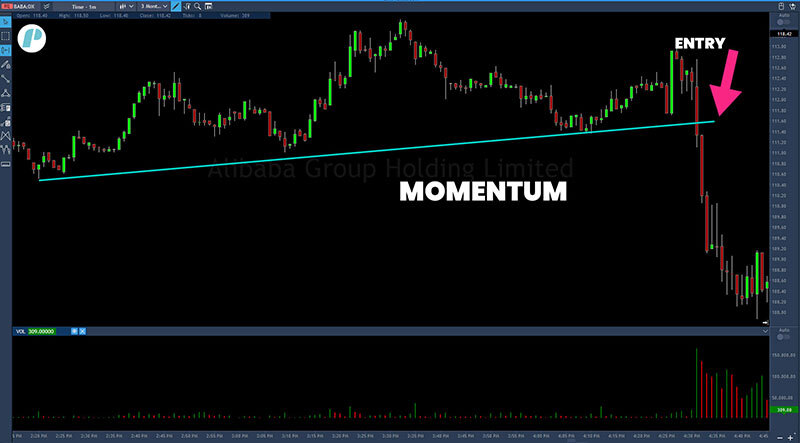
Trend following trading
Trading by following a trend is another trading strategy day traders can use in any market. This trading strategy is based on buying securities when their price trend goes up and selling when their trend goes down, on the belief that the price movement will continue.
Trend following trading strategy takes advantage of uptrends and downtrends. In addition to the high or low swings, trend traders utilize technical indicators, moving averages, and trendlines to help identify potential trade signals and trend direction.
For example, when a trend is making its rounds in the industry, traders don’t predict its price level; they jump on the trend and ride it. They could enter a long position when the security is trending upwards and a short position when it is trending downwards.
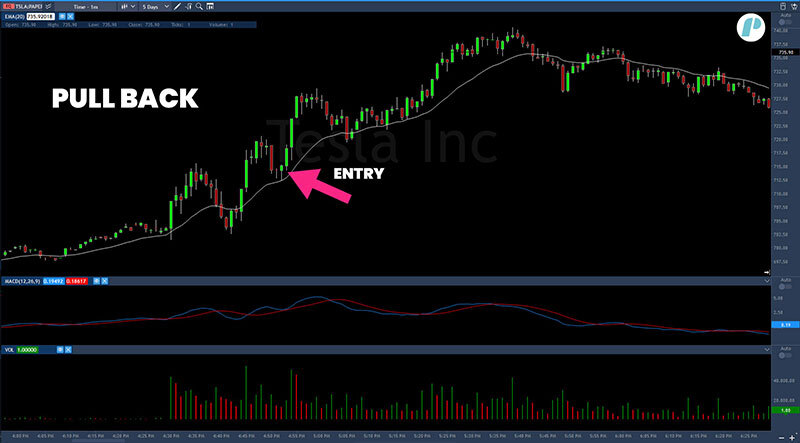
Countertrend trading
A countertrend trading strategy is the opposite of trend following and can also be used in any market. This trading strategy is a form of swing trading that suggests prevailing trends will see reversals and attempts to make a profit from them as the trend continues.
A countertrend trading strategy involves buying or selling securities that have experienced an impulsive bullish or bearish move, hoping that a corrective move higher or lower will allow you to sell or buy it at higher or lower. Traders using this strategy can stop if the expected correction does not manifest itself.
For example, after a trend’s highs, the security price trend’s highs, the security price will periodically drop and rise. A day trader using this strategy could buy the security while the price is low and watch the market until the price increases, then sell to make a profit.
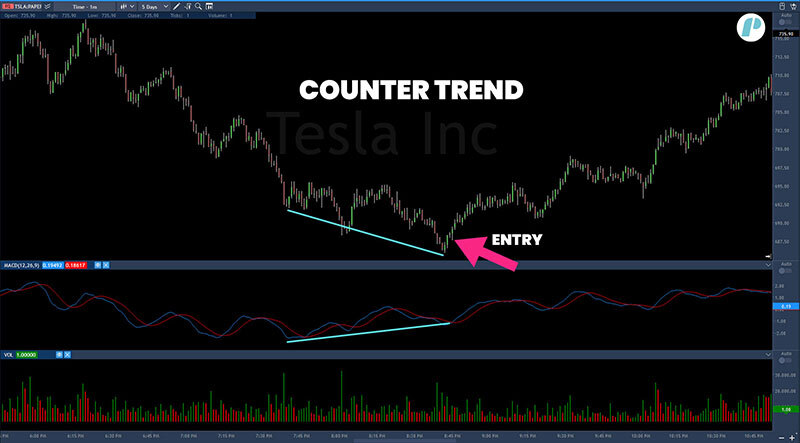
Other types of day trading strategies
It is worth noting that there are several trading strategies you can adopt as a trader. However, the three strategies highlighted above can be used in any type of market. Other types of trading strategies you can use as a day trader are:
Scalping trading
Traders can also use the scalping trading strategy by profiting from small price changes. When scalp trading, traders must adhere strictly to the trading principles because profits are so small to avoid one significant loss that could sweep away dozens of successful day trades.
The main premise of scalping is that it helps to lower exposure risk since the time in the market for each trade is relatively short. Scalp trading also requires smaller moves which are easier to obtain and are more frequent than large ones. Hence, scalp traders can mitigate the risk of an adverse event from a big move.
Based on how scalping works, it can be used as a risk management method. Depending on the trader, the amount of profit a trader wants to see security grow when using the scalping strategy varies. Some traders like to see a 1:1 risk/reward ratio. So, if they enter a position for scalp trading at $10 with a stop at $9.90, the risk is $0.10, and they will reach a 1:1 risk/reward ratio at $10.10.
Arbitrage trading
Arbitrage trading strategy is another that day traders use to make a profit in no time. It is based on the premise of simultaneously buying a security in one market and selling it for a profit in another market. The price difference between the two markets is typically small and short-lived. However, returns can be impressive when multiplied in a large volume.
For example, if the price of a security of company A is trading at $10 on the New York Stock Exchange, and it is at $10.10 on the London Stock Exchange, then an arbitrage strategy can be used here. One could buy the security on NYSE cheap and sell it for a profit on the LSE. Hence, from this example, the trader makes a profit of $0.10 per share.
In other words, you need access to a lot of funds to make the most out of the arbitrage trading strategy. Traders can leverage hedge funds, prop firms, and other funding companies to seek the resources needed to capitalize on arbitrage trading.
Breakout trading
Breakout trading is a strategy that suggests a trader enters a trade as soon as its price manages to break out of its range. Traders using this strategy also set an exit target with the classic resistance and support levels. So, if you want to use this strategy, you want to be on the lookout for strong momentum.
When traders enter a market using this strategy, they need to closely monitor the price action by placing a sell stop and a buy stop order. The buy stop order is often placed above the former support level or below the former resistance level.
For example, when you want to use the breakout trading strategy, enter a trade when the price has breached a resistance or support level. A trade that breaches a resistance or support level could mean its price has the momentum to go higher.

Range trading
Range trading is another strategy traders use to trade security between consistent high and low prices for a period. It involves identifying significant price levels with technical analysis like resistance, support, moving average, and volume trends. When range trading, traders look out for securities that breakout or breakdown below their trading range.
Whether a trade breakout or breakdown, there is building momentum (positive or negative). Typically, breakout or breakdown in this strategy is more reliable when a large volume accompanies it. Note that breakout occurs when the price of a security breaks above the trading range. At the same time, a breakdown occurs when the price of a security falls below the trading range.
A perfect example of range trading in practice could be perhaps a security trading at $20. But if you believe it will rise to $22, you trade a range between $20 and $22 over the next two hours.
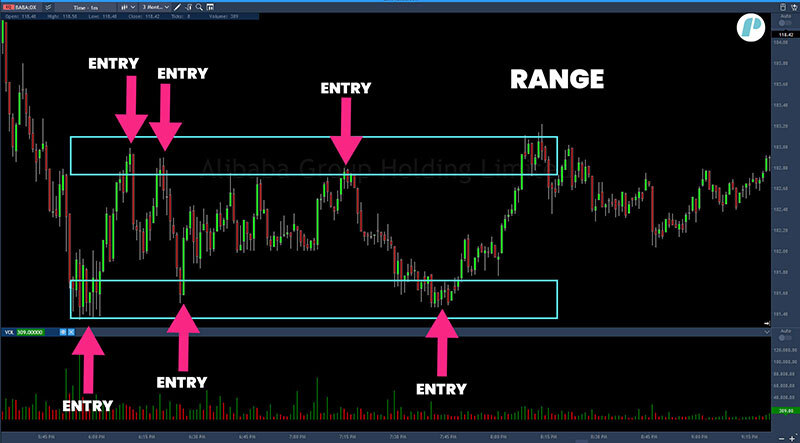
Pullback trading
Pullback occurs at all times and learning how to trade it can enhance your profitability. When trading, the price movement of securities alternates between bullish (rise) and bearish (fall) trend waves. Hence, the dominant trend moves higher during an uptrend, and a correction wave represents the move against the ongoing trend direction.
The idea of the pullback trading strategy is that you want to wait for the price to pull back during a trend so you have a better entry point. When using the pullback trading strategy, use indicators like trendlines, Fibonacci, moving average, breakout, and horizontal steps to know if a security has the potential to pull back.
After the reversal, there is a potential for it to continue to rise, so you can buy it after the fall with the hopes that it rises after a couple of hours. So, for example, a security that sold at $10 per share could increase to $10.5 after an hour before reversing.
Divergence trading
Divergence trading is reliable because it provides high-quality and dependable trading signals. While reversal traders are commonly associated with divergence trading, this trading strategy can be used by other traders like trend-following.
Divergence exists essentially because of an indicator that does not agree or diverge from its price trend. To simply put, the indicator starts to move in the opposite direction to the price. Divergence can be bullish or bearish, depending on the direction of the deviation.
A day trader takes the change in the direction of the indicator to mean the price is about to follow. Hence, with divergence, a trader can get a better shot at entering a trade at the right time. For example, if the price of a security is $10, and after an hour, it increases to $10.8. A divergence trade strategy suggests that though the latter price of the deposit may fall, it will most likely rise again, giving you a better entry point to buy cheap and sell expensive.
High-frequency trading (HFT)
A high-frequency trading strategy is an algorithmic trading method where many orders are issued in milliseconds. Usually, with this trading strategy, traders with a faster computing speed are more profitable than those with a slower execution speed.
HFT strategy is not only characterized by its high speed, but they also offer high turnover rates. Another benefit of the HFT is that it removes bid-ask spreads and improves market liquidity. Although the profits from HFT are minimal, the thousands of orders opened with it lead to more significant potential gains.
HFT strategy can also utilize dark pools to attain financial instruments when possible. For example, if an algorithm can buy on a bid and then sell to a dark pool at the midpoint, it will be able to net half the bid-ask spread with a less sustained fee. Similarly, if an algorithm can accumulate a position, a dark pool may provide an easy exit that wouldn’t affect the price.
How to find which day trading strategies are right for you?
Coming up with a trading strategy requires taking many criteria into consideration, and the process can be time-consuming. However, it is worth it! Also, the fact that a trading strategy works for one person does not mean it will work for you. So, when searching for a trading strategy, here is what you need to consider to find the right one.
Personality
Determining your personality type is the first step to finding the right trading strategy. There are about three categories of traders’ personalities; the anxious wimp, the greedy scrooge, and the aggressive bully. And of course, nothing is black and white in trading, so expect to find a more complex personality.
So, whatever your trading personality may be, you should fine-tune the trading strategy to suit you. Since you can alter the parameters of trading strategy, ensure you do so to develop a strategy that works for you. Because what may work for someone else may not work for you.
You can learn more about finding a day trading strategy that fits your personality on our podcast about that subject.
Trade frequency or timeframe
Another question to ask yourself when looking for the best trading strategy is how often you trade. For some traders, finding one or two trades per day is all they need, while to some greedy or aggressive traders, this may be a problem.
If you are a frequent trader, you need a trading strategy that lets you find as many trades as you’d want. If you are an anxious trader, you should target a strategy that guarantees more successful traders, even though you only find a couple weekly.
Type of assets
Day traders can trade with several assets to make a profit. Note that assets vary in volatility as well as returns. So, the type of assets you invest in as a day trader should depend on what you want to achieve at the end of the day.
Also, note that any strategy you’re trading with should consider the type of asset you want to use in trading. For example, a day trader trading crypto will use a different strategy from a day trader trading stocks.
Capital
Capital also makes such a big difference when selecting a trading strategy. It is possible to save up cash for some trading strategies and make lots of money over time. At the same time, some trading strategies wouldn’t work out unless you have a huge source of income, like from a prop firm or hedge fund.
With some trading strategies, it would take considerably longer to break even when your capital is too small. While with some strategy, you can even break even on investment after a couple of weeks.
Risk appetite
Many traders do not have a broad understanding of how high expectancy and probability work in trading. Even with the most sophisticated analytical tools at your disposal, trading is undoubtedly risky, especially if you want to make any real money out of it.
Many traders wouldn’t want to trade in security with a low win rate but less risky, but this is ideal for traders with a low-risk appetite. Similarly, the most profitable trades with a higher win rate often come at a higher risk and are suitable for traders with an enormous risk appetite.
Conclusion
In summary, as a day trader, the importance of having a trading strategy cannot be overemphasized enough. You should have at least one trading strategy, and better if you combine two or more strategies when analyzing whether to buy or sell a security.
Remember, you should tailor a trading strategy to suit your trading style. You can lose lots of money if you don’t use the right trading strategy that suits your character and personality.
If you liked this post make sure to share it!
